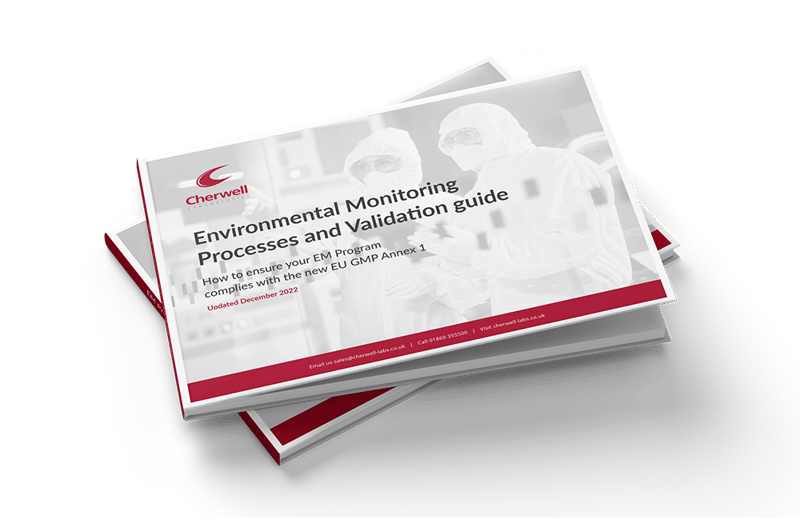Neutraliser choice an important consideration
Contact plates have been around since the 1950s, and are now widely used within pharmaceutical manufacturing for environmental monitoring (EM) of surfaces. The media typically contains a mix of neutralisers to counter the effect of any residual disinfectant that might be transferred to the agar surface. Contact plates are also widely used for air sampling applications, for example within devices such as Cherwell’s SAS range of air samplers.
There are many media formulation variants, and it’s important users understand the needs of their application, as well as the factors that can influence formulation choice. An important consideration is choice of neutraliser.
A common combination is lecithin and Tween, but this mix neutralises only a limited range of disinfectants, notably Quaternary Ammonium Compounds (QACs), parahydroxybenzoates (parabens), bis-biguanides, and iodine1. An increasingly popular neutraliser combination is lecithin, Tween, sodium thiosulphate and L-histidine. Media manufacturers refer to this mix in a variety of ways, but at Cherwell we call it Neutraliser 4. This has a broader range of efficacy, including against mercurials, halogens and aldehydes1.
It’s important to understand what disinfectants are being used, which category they fall into, and in turn which neutralisers are required. Without this fundamental knowledge, EM data can be affected, leading to false negative results.
Plate size can be important
Whilst neutralisers are less of an issue with air sampling and monitoring, the actual size of the plate can be a significant factor. A key performance variable in any sieve sampler is its collection efficiency. This is determined by the design parameters and the air flow through the sampler. Air flow will affect impaction velocity of particles on to the agar surface, and ultimately determine the collection efficiency. This is most evident in the impaction imprint, or ‘dimples’, on the surface of the agar (see image, top).
The gap between the sieve and the surface of the agar on the contact plate can affect this performance. If agar has shrunk and/or partially desiccated, it’s possible for dimples to be absent, suggesting that impaction velocity has decreased, and particles have therefore not been captured. However, if the contact plate is too tall, this can restrict air flow, also affecting velocity and reducing dimpling. In extreme cases, the sieve could even become blocked.
The best indicator is that, from a 1,000-litre sample, there should be an even, well-pronounced pattern of dimples across the entire agar surface. This gives confidence of impaction, and therefore particle collection. If the pattern is light or uneven, or worst still not present at all, the quality of the EM results will be compromised, and urgent investigation is necessary.
If you’re concerned about the effectiveness of your environmental sampling equipment, Cherwell’s service team can offer advice on any mechanical issues, and our Product Specialists can help with selection of the correct media for your specific application.
1 EP 2.6.12 Microbial examination of non-sterile products: Microbial enumeration tests - Table 2.6.12.-2. – Common neutralising agents for interfering substances.







